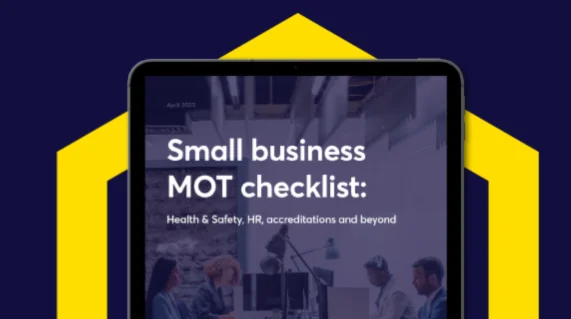When it comes to HR and Employment Law in your beauty business, it’s really important to make sure you’ve got everything sorted to stay on the right side of the law. But what’s NOT easy is knowing exactly how to do that. HR is a tricky part of running a beauty business – we get that. But it’s also super important to make sure you get it right because it could really harm your business if you don’t.
So what common mistakes should beauty businesses avoid when it comes to HR and Employment Law? We’ve put together a few cases from when HR has gone wrong, to give you a few examples of where other businesses have tripped up in the past.
Self-employed or employee? Tribunal decides
Gorman v Terence Paul (Manchester) Limited
In this case, a hairdresser (Gorman) brought a claim against the salon she worked at, Terence Paul, for unfair dismissal, sex discrimination, notice pay, holiday pay and redundancy pay. The salon claimed that Gorman was not entitled to any of these statutory rights, as Gorman was engaged on a self-employed basis. So, the key issue, in this case, was Gorman’s employment status.
Now, the problem was that, for all intents and purposes, Gorman was an employee, despite her contract saying she was self-employed. This is because the control the salon had over Gorman during her time at the salon was above and beyond the control, they would have over a self-employed person.
For example, her hours of work were set by the salon, any holiday she took had to be approved by the salon, and they also had control over her bookings, client lists and pricing. The salon, therefore, was taking the risk of profit loss, rather than Gorman. Gorman’s working reality was very different from what her contract stated. So even with a contract in place, an employer needs to make sure that what they are practicing is consistent with the contract.
It’s worth seeking advice if you’re not entirely sure on the rules surrounding this, and consider the following questions:
- What’s the role of the individual?
- Do you have control over that work and what they can and cannot do?
- How is payment calculated and where does the economic risk lie?
National Minimum Wage leads to employment status dispute
M Lloyd v Joanna Nichols Ltd
Similar to the above case, Lloyd was working as a self-employed person at a hair and beauty studio. She tried to exercise her legal right to claim a National Minimum Wage and was then sacked by the studio.
So she brought a claim against the studio for unfair dismissal, breach of contract for failure to provide notice pay, holiday pay and an unauthorised deduction from wages. Again, the studio claimed that since Lloyd was self-employed, she wouldn’t be entitled to any of these benefits.
But, after considering Lloyd’s employment status, the court found that she was an employee, rather than self-employed. Once again, her contract was different to her working reality.
It’s important that as an employer, you remember that a contract isn’t the only factor that determines someone’s employment status. It’s easy to slip into treating a ‘self-employed’ person as an employee and then end up facing costly disputes later down the line.
Former employee branches out on their own
Barber v Sean Hanna
In this case, Barber was an employed hair stylist. The salon he had worked at wanted to enforce a restrictive covenant – essentially, this restricted him from working within a half-mile radius of his former salon for 6 months. They also attempted to stop him from ‘inducing’ any of his former clients to use his services for the same period.
After this, Barber rented a space close to his old salon and started working on a self-employed basis, as well as advertising his new business on social media and in a local magazine.
The court found two things – firstly, he was in breach of the geographical restrictions in his contract. The tribunal suggested that Barber shouldn’t work so close by his old employer, and this could be enforced by an injunction.
But the tribunal didn’t agree with his old employer trying to stop him from advertising. The tribunal refused to grant an injunction, deciding it would be unlawful to stop Barber from announcing his new business on social media.
So, what can this case teach you? Well, if your business wants to use restrictive covenants, these have to be reasonable in terms of duration and geographical area. For example, it’s best to go with 6 months rather than 12. It’s also best to make sure the covenant is not too restrictive, as it could result in it being unenforceable.
So how can HS Direct help you get everything right?
This guide covers all the basics, from legal requirements to making sure you have effective contracts in place. And, if you need a quick fix, we can sort you out with a comprehensive and consistent pack of employment contracts that will include everything you need to cover every type of employee.
And this isn’t all we can help you out with! HS Direct is your one-stop-solution for everything your business needs to stay compliant. From our smart Health & Safety and HR software and support packages to help you easily manage everyday compliance to a whole host of templates, tools and documentation designed to make sure your business ticks all the right boxes.
If you’d like to find out more about how HS Direct supports businesses across the UK, get in touch with our experts by calling 0114 244 4461 or by clicking here to request a call-back.





